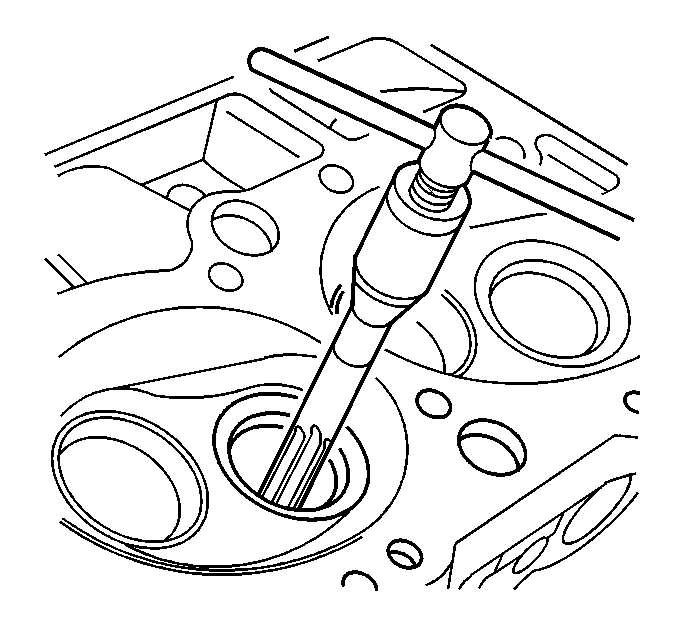Valve Grinding
The pitted valves must be refaced to the proper angle. Replace the valves with stems that show excessive wear or that are warped excessively. When an excessively warped valve head is refaced, a sharp or thin valve margin may result because of the amount of metal that must be removed. The undersize valve margins lead to breakage, burning, or preignition due to heat localizing on the edge. Refer to Engine Mechanical Specifications .
Several different types of equipment are available for refacing the valves. The manufacturer's instructions for how to use the equipment should be carefully followed to achieve proper results. Refer to Engine Mechanical Specifications .
Valve Seat Grinding
Reconditioning the valve seats is very important because the seating of the valves must be perfect for the engine to deliver the power and the performance that the engine was designed to produce. Another important factor is the cooling of the valve head. Good contact between each valve and its seat ensures that the heat will be carried away properly.
Several different types of equipment are available for resurfacing the valve seats. Carefully follow the recommendations of the manufacturer of the equipment being used to attain the proper results.
Regardless of what type of equipment is used, it is essential that the valve guide bores be free from the carbon or the dirt in order to ensure proper centering of the pilot in the guide. Refer to Engine Mechanical Specifications .
Reaming Valve Guides

The intake valve guides used in the engine are simply holes bored into the cylinder head. The exhaust valve guides are made of cast iron and they are pressed into the cylinder head. The valve guides are not replaceable. If the valve stem-to-bore clearance as previously measured is excessive, the valve guides should be reamed an a valve with an oversize stem installed. Oversize valves are available. Select a reamer that will provide a straight, clean bore through the entire length of the valve guide.
